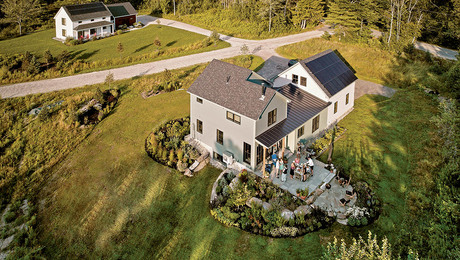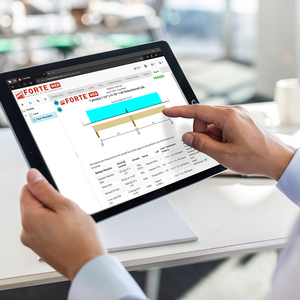This may or may not pertain completely to this forum but I value the members opinions and trust your expertise. We have lived in our home for a year now and I would like to get some heating issues resolved. Our house is a 1940’s home with forced heat and air, in the 1960’s an addition (crawlspace) was added onto the back of the house. The back of the house last winter always seemed cold, partly due to the poor insulation in the walls which has now been upgraded with a recent remodel. When the furnace or AC turns on there isn’t much for pressure coming out of the registers and when it does it just seems lukewarm to cool. Was the system not sized properly? Or is it because the ductwork is in an unconditioned airspace and is not wrapped in insulation that is causing the cool air to come out?
Am I giving to much info or not enough? Any help is appreciated. Thanks.


















Replies
is their a return air in the room? in not that may be part of the problem with poor pressure. how warm does the crawl get? how many BTU is the furnace, and whats your sq ft?
Yes there is a return air in the room and two registers. The adjoining room is my daughter's bedroom and that has one return air and one register and stays equally as cool... the crawlspace temperature is comfortable...
As 6bag noted with no "air return" can be like pushing against an immovable object.
More than likely is that the duct work was sized for the original home & not large enough for the additional square footage.
Without changing the ductwork size one of two things can be easily done.
The cheap method is to restrict the other vents until it forces more air out the ones in the addition. AKA balancing the system.
The other is to use a larger fan (more CFM), but if you go too big it moves too much air which is less efficient & louder.
In answer to your questions: Yes. And no.
Likely, as suggested, the heating system was adequate for the original structure but not the addition. And running heating ducts through an unheated crawl loses a lot of heat. And the ductwork is likely inadequate. And the heating system may be undersized. And there may be lack of good returns from the addition.
One question is what are your long-term plans? If you want to stay here, and the furnace was last replaced in 1980, it would be worthwhile to upgrade the whole system. Get the worst kinks in the ductwork corrected (seal and insulate the stuff in the crawl, investigate the feasibility of enlarging the trunk feeding that stuff, investigate the feasibility of adding a return if it's missing), upgrade to a high efficiency furnace, and install a "zoned" system.
The minimum fix might be to simply install zone controls on the existing system. This would allow the furnace (or AC) to run exclusively for the benefit of the addition, after it's satisfied the needs of the main house.
I believe it is very likely that your current furnace and A/C have adequate capacity to do the job.
Uncomfortable rooms nearly always are the result of poor duct design and installation, not equipment problems.
Installing bigger equipment without addressing the ductwork will actually make things worse because the t'stat will be satisfied even more quickly, thereby shutting down the system long before the addition has had a chance to reach a comfortable temperature.
So, in answer to your questions:
If the supply duct path ("path" includes the branch duct and the trunk that serves it) is large enough, insulate it in the crawl space to at least R-8.
Provide an unrestricted return air path from the addition. This could be simply a transfer grille or jumper duct that allows air to find its way back to the main return(s).
Make sure that the main return(s) are plenty large. Installers usually get the supplies sized right, but often fail to provide unrestricted return.
Don't use a restrictive filter on the system--they can reduce airflow dramatically.
Seal all ductwork that you can reach with mastic, if possible. NOT cloth-backed duct tape.
It's probably not a good idea to restrict airflow at other registers in an effort to increase it in the addition, because you will likely end up restricting the airflow across the heat exchanger and cooling coil. This will reduce efficiency and possibly overheat the heat exchanger, which will result in premature failure.
I am not a big fan of zoned systems unless the furnace and A/C are equipped with variable outputs. This is because when only zone is flowing, the airflow across the coil is inadequate to unload the coil, either of its heating or cooling capacity. This is true even with a bypass damper in place, because the bypassed air simply short-circuits the duct system and returns to the coil with the temperature essentially unchanged.
I'm not a heating/cooling specialist like, I suspect, some of your respondents are but from experience in the apartment business (converted houses) I can tell you about the experience I have had. I have done this on several units but I relate one notable case. Soon after we purchased the house we noted that one apartment just wasn't getting enough heat. We found there was no air return so installed that. Still not enough heat so put in a couple inline fans in the heat ducts in series with a thermostat connection to the furnace fan. Sort of like zone heating but did not shut off air flow the the rest of the house. When the furnace kicked on the installed fans would distribute a goodly part of the heat to the apartment until the thermostats shut them off then all the heat would be distributed to the rest of the house until the main thermostat shut the furnace off. Very cheap and a most comfortable fix. A tag on the faithful and very reliable furnace indicated that it had been serviced in 1946 which told me that it was operating at about 50 % efficiency so a new 92% efficient furnace was installed which resulted in more than enough fuel savings in a couple years to pay for the improvements.